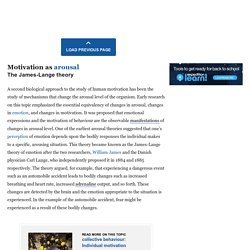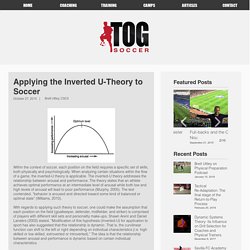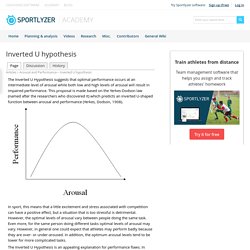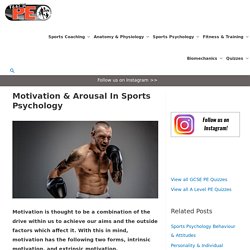

Motivation - Motivation as arousal. Research on arousal mechanisms of motivation has furthered understanding of both sleep processes and stress reactions.

In the case of sleep, arousal levels generally seem lower than during waking; however, during one stage of sleep arousal levels appear highly similar to those in the waking state. Sleep itself may be considered a motivational state. The biological motivation to sleep can become so overpowering that individuals can fall asleep while driving an automobile or while engaged in dangerous tasks. Five stages of sleep have been defined using the electroencephalograph (EEG). The EEG records the electrical activity of neurons in the outermost portion of the brain known as the cerebral cortex.
According to EEG-based findings, everyone cycles through five stages during sleep. Stage 5 sleep is also known as rapid eye movement (REM) sleep because during this stage the eyes begin to move rapidly under the eyelids. Academic OneFile - Sport-related anxiety: current insights. LOG-IN: Username: nelgirlcol Password: ngpc. Academic OneFile - The Influence of Cortisol, Flow, and Anxiety on Performance in E-Sports: A Field Study. LOG-IN: Username: nelgirlcol Password: ngpc. Applying the Inverted U-Theory to Soccer.
Within the context of soccer, each position on the field requires a specific set of skills, both physically and psychologically.

When analyzing certain situations within the flow of a game, the inverted-U theory is applicable. The inverted-U theory addresses the relationship between arousal and performance. The theory states that an athlete achieves optimal performance at an intermediate level of arousal while both low and high levels of arousal will lead to poor performance (Murphy, 2005). The text contended, “behavior is aroused and directed toward some kind of balanced or optimal state” (Williams, 2010).
With regards to applying such theory to soccer, one could make the assumption that each position on the field (goalkeeper, defender, midfielder, and striker) is comprised of players with different skill sets and personality make-ups. References: Arent, S., & Landers, D. (2003). Murphy, S. (2005). Williams, J. (2010) Arousal-Performance Relationships. Arousal - the inverted 'U' theory - Mental preparation - AQA - GCSE Physical Education Revision - AQA - BBC Bitesize.
Inverted U hypothesis - Sportlyzer Academy. The Inverted U Hypothesis suggests that optimal performance occurs at an intermediate level of arousal while both low and high levels of arousal will result in impaired performance.

This proposal is made based on the Yerkes-Dodson law (named after the researchers who discovered it) which predicts an inverted U-shaped function between arousal and performance (Yerkes, Dodson, 1908). In sport, this means that a little excitement and stress associated with competition can have a positive effect, but a situation that is too stressful is detrimental. However, the optimal levels of arousal vary between people doing the same task. Even more, for the same person doing different tasks optimal levels of arousal may vary. However, in general one could expect that athletes may perform badly because they are over- or under-aroused. The Inverted U Hypothesis is an appealing explanation for performance flaws. Refernces: Yerkes, R.M., & Dodson, J. Motivation & Arousal In Sports Psychology - TeachPE.com. Motivation is thought to be a combination of the drive within us to achieve our aims and the outside factors which affect it.

With this in mind, motivation has the following two forms, intrinsic motivation, and extrinsic motivation. Intrinsic motivation This is motivation from within. A desire to perform well and succeed. The following will be true: Desire to overcome the problem or taskDevelopment of skills and habits to overcome that problemRehearsal of successful habits until they are perfectA feeling of pride and enjoyment in performing the skillRepeated goal setting in order to progress and maintain motivation Goals must be all of the following in order to be attainable: SmartMeasurableAgreedRealisticTime -relatedExcitingRecorded Extrinsic motivation Extrinsic motivation comes from a source outside of the performer. Tangible rewards: Physical rewards such as medals and money. Intangible rewards: Praise, recognition, and achievements. Motivation, Arousal, and Performance Inverted U Law: